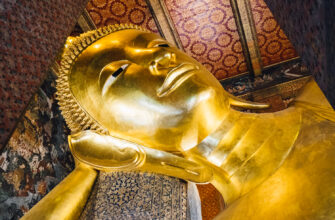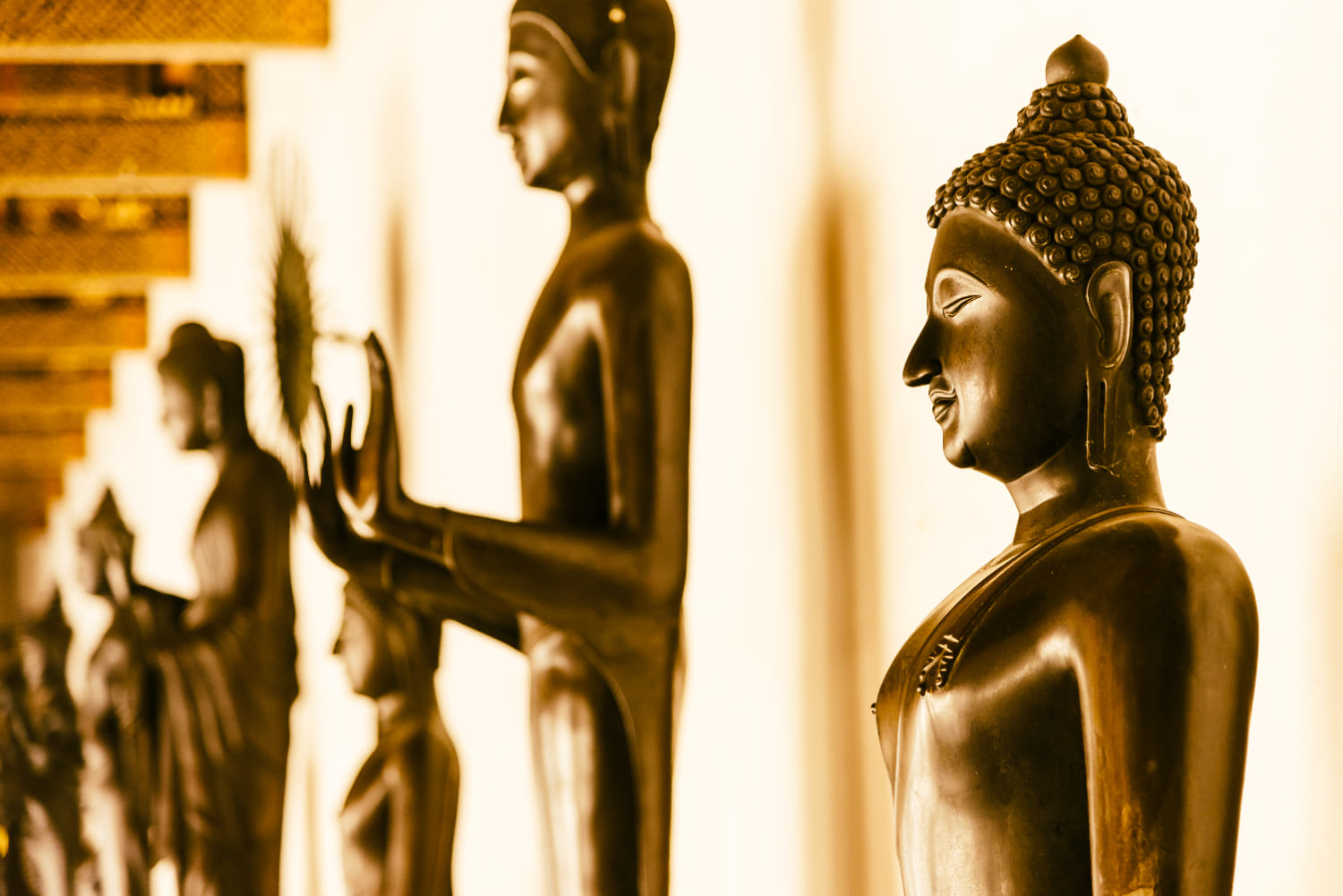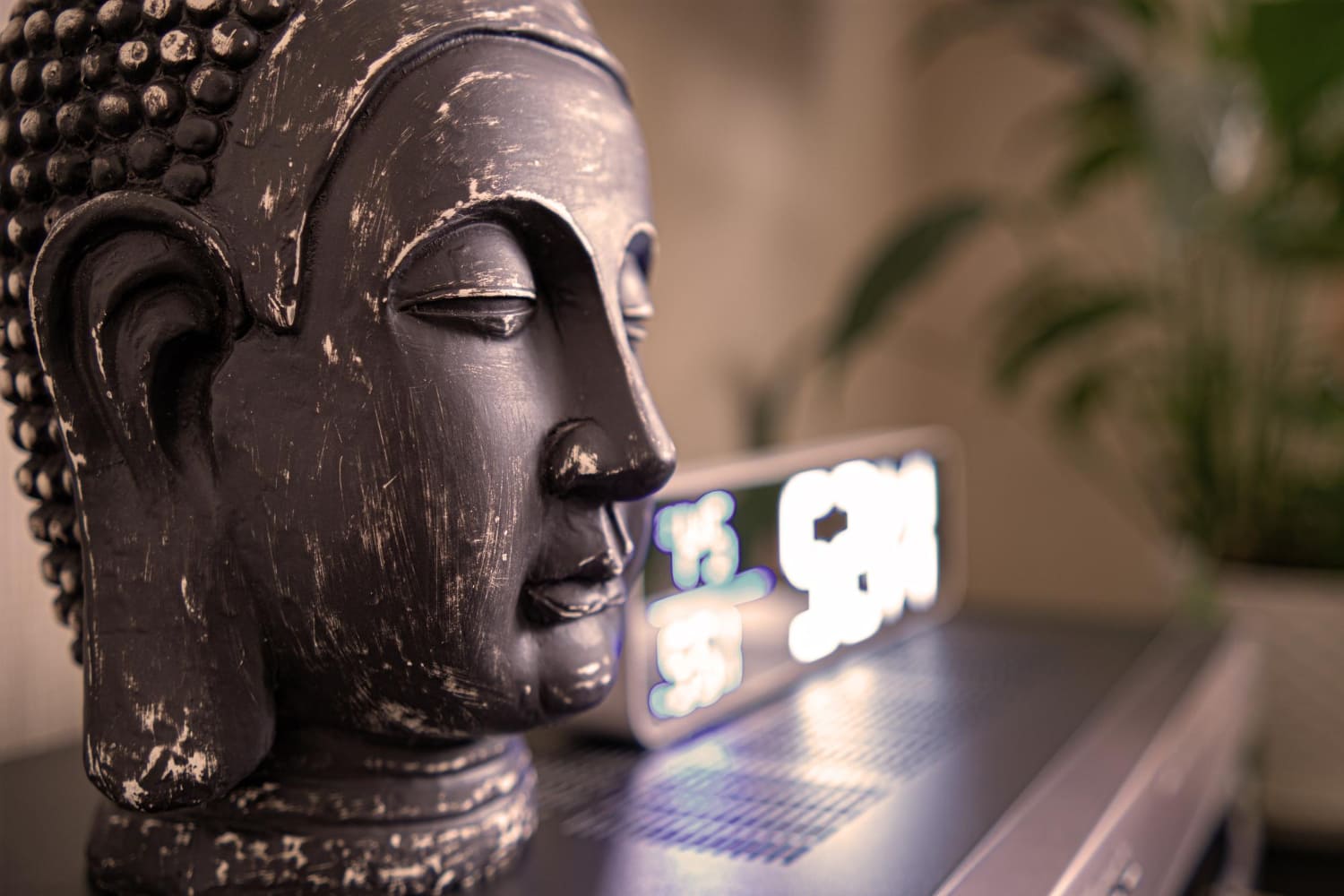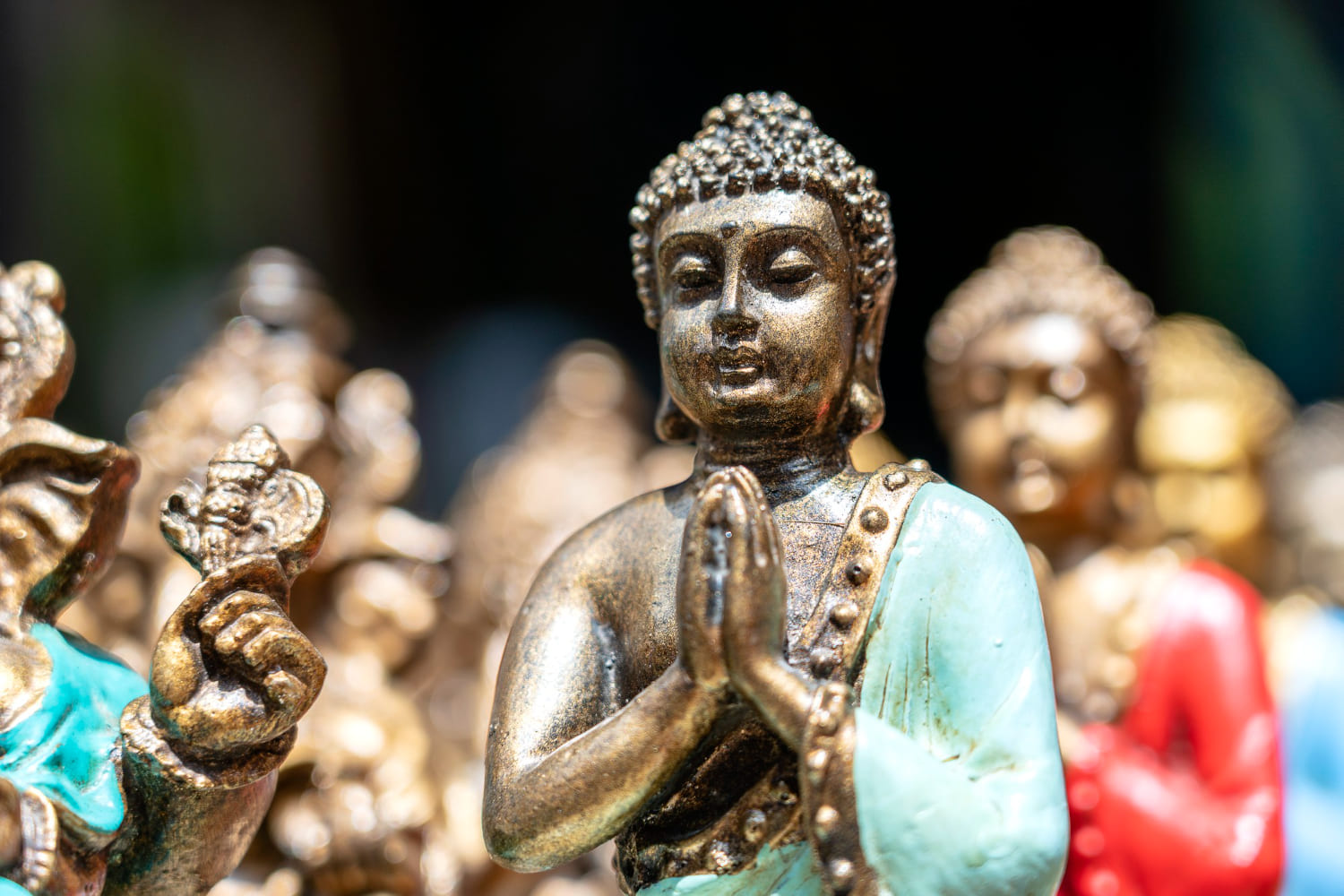Buddhist chants have been an integral part of Buddhist practice for centuries. Chanting is a form of meditation that can help calm the mind, focus attention, and cultivate compassion.
Chants are often used in Buddhist rituals and ceremonies, but they can also be used as a personal practice.
There are many different types of Buddhist chants, each with its own unique purpose and meaning. Some chants are used to pay homage to the Buddha and other enlightened beings, while others are used to cultivate specific qualities such as compassion, wisdom, or courage.
Chanting can be done alone or in a group, and can be accompanied by music or performed in silence.
What are Buddhist Chants?
Buddhist chants are recitations or musical verses that are an integral part of Buddhist practice. They are used to cultivate mindfulness, focus, and concentration, and to help achieve enlightenment. Chanting is a form of meditation that involves repeating a phrase or mantra over and over again.
Chanting is a common practice in many Buddhist traditions, including Theravada, Mahayana, and Vajrayana. It is believed that chanting can help purify the mind and body, and lead to a deeper understanding of Buddhist teachings.
There are many different types of Buddhist chants, each with its own purpose and meaning. Some chants are used to pay homage to the Buddha, while others are used to invoke the blessings of various bodhisattvas and deities. Still, others are used to cultivate compassion, wisdom, and other virtues.
Chanting is often accompanied by the use of prayer beads, which are used to keep track of the number of times the mantra or phrase is repeated. The number 108 is considered a sacred number in Buddhism, and many practitioners will repeat the chant 108 times as a form of devotion.
History of Buddhist Chants
Buddhist chants have been an essential part of Buddhist practice for centuries. The tradition of chanting began during the time of the Buddha, who taught his followers to use chanting as a means of focusing their minds and developing their spiritual practice.
Chanting was used to help practitioners remember the teachings of the Buddha and to express their devotion to him.
Over time, the practice of chanting evolved and became an integral part of Buddhist ceremonies and rituals. Chants were used to invoke the blessings of the Buddha and other enlightened beings, to purify negative karma, and to cultivate positive qualities such as compassion and wisdom.
The chanting tradition was passed down from generation to generation, and different schools of Buddhism developed their own unique chants and styles of chanting. Today, there are countless Buddhist chants and mantras that are still used in Buddhist practice around the world.
One of the most famous Buddhist chants is the Om Mani Padme Hum mantra, which is associated with the practice of compassion and is commonly used in Tibetan Buddhism. Another well-known chant is the Nam-myoho-renge-kyo mantra, which is used in Nichiren Buddhism as a means of attaining enlightenment.
Chanting continues to be an important part of Buddhist practice today, and many Buddhists find that it helps them to deepen their meditation practice and cultivate a sense of peace and calm. Whether reciting a simple mantra or participating in a complex ceremony, chanting can be a powerful tool for spiritual growth and transformation.
Types of Buddhist Chants
Buddhist chants are an essential part of Buddhist practice. They are recited to focus the mind and create a sense of calm and tranquility. There are several different types of Buddhist chants, each with their own unique purpose and meaning. Here are a few:
- Sutras: These are sermons of the Buddha or one of the Buddha’s disciples. They are often chanted in their entirety or in part during Buddhist liturgies.
- Mantras: These are short phrases or sounds that are repeated over and over again. They are believed to have a transformative effect on the mind and body.
- Gathas: These are short verses that are recited before or after a meal, to express gratitude for the food and the people who prepared it.
- Bodhisattva Chants: These are chants that honor the bodhisattvas, enlightened beings who have chosen to remain in the world to help others achieve enlightenment.
Each type of chant has its own unique purpose and meaning, but all are designed to help practitioners focus their minds and cultivate a sense of inner peace and tranquility.
Whether you are new to Buddhism or a seasoned practitioner, incorporating chanting into your daily practice can be a powerful tool for spiritual growth and self-discovery.
Benefits of Chanting
Chanting is a fundamental practice in Buddhism that has numerous benefits for both the mind and body.
Here are some of the benefits of chanting:
- Reduces stress and anxiety: Chanting helps to calm the mind and reduce stress and anxiety. The repetitive nature of chanting helps to focus the mind and promote relaxation.
- Improves concentration: Chanting helps to improve concentration and focus. It helps to train the mind to stay present and focused on the present moment.
- Enhances self-awareness: Chanting helps to enhance self-awareness and introspection. It helps to connect with one’s inner self and develop a deeper understanding of oneself.
- Promotes emotional well-being: Chanting helps to promote emotional well-being. It helps to release negative emotions and promotes a sense of inner peace and happiness.
- Connects with the divine: Chanting helps to connect with the divine and develop a deeper spiritual connection. It helps to cultivate a sense of reverence and gratitude towards the universe.
Chanting is a simple yet powerful practice that can have a profound impact on our lives. Whether you are a beginner or an experienced practitioner, incorporating chanting into your daily routine can help you lead a happier, healthier, and more fulfilling life.
How to Chant
Chanting is an integral part of Buddhist practice. It is a way to connect with the Buddha and to cultivate inner peace and wisdom.
Here are some basic steps to follow when chanting:
- Find a quiet place where you can concentrate and chant without interruption.
- Sit in a comfortable position with your back straight and your hands resting on your lap.
- Take a few deep breaths to calm your mind and body.
- Begin by reciting the Three Refuges: “I take refuge in the Buddha, I take refuge in the Dharma, I take refuge in the Sangha.”
- Next, recite the Four Immeasurables: “May all beings have happiness and the causes of happiness, May all beings be free from suffering and the causes of suffering, May all beings never be separated from the happiness that knows no suffering, May all beings abide in equanimity, free from attachment and aversion.”
- Finally, recite the mantra or chant that you have chosen. You can use a mala to keep track of the number of repetitions.
It is important to chant with sincerity and concentration. Try to focus your mind on the chant and its meaning. If your mind wanders, gently bring it back to the chant. Chanting can be done alone or with a group. It is a powerful way to cultivate inner peace and compassion.
There are many different mantras and chants in Buddhism. Each one has its own unique meaning and purpose. Some popular chants include:
| Chant | Meaning |
| Nam-myoho-renge-kyo | Devotion to the Lotus Sutra |
| Om Mani Padme Hum | Compassion for all sentient beings |
| Gate Gate Paragate Parasamgate Bodhi Svaha | Gone, gone, gone beyond, gone completely beyond, enlightenment, hail! |
Experiment with different chants and mantras to find the one that resonates with you the most. Chanting can be a powerful tool for spiritual growth and transformation.
Full List of Buddhist Chants
Buddhist chants are an essential part of Buddhist practice. They help to purify the mind, develop concentration, and cultivate positive qualities such as compassion and wisdom.
Here is a list of some of the most popular Buddhist chants:
- Buddhabhivadana (Preliminary Reverence for the Buddha)
- Tisarana (The Three Refuges)
- Pancasila (The Five Precepts)
- Buddha Vandana (Salutation to the Buddha)
- Dhamma Vandana (Salutation to his Teaching)
- Sangha Vandana (Salutation to his Community of Noble Disciples)
- Om Mani Padme Hum (Avalokitesvara)
- Om A Ra Pa Ca Na Dhih (Manjushri/Manjughosa)
- Om Vajrapani Hum (Vajrapani)
- Om Tare Tuttare Ture Svaha (Green Tara)
- Om Amideva Hrih (Amitabha)
- Om Tare Tuttare Ture Mama Ayuh Punya Jnana Pushtim Kuru Svaha (White Tara)
- Om Muni Muni Mahamuni Shakyamuniye Svaha (Shakyamuni)
- Nam Myoho Renge Kyo
- Gate Gate Paragate Parasamgate Bodhi Svaha (Heart Sutra)
- Namo Amituofo (Amitabha)
- Tayata Om Bekanze Bekanze Maha Bekanze Radza Samudgate Soha (Medicine Buddha)
Each of these chants has its own unique purpose and meaning. Some are used to pay respect to the Buddha, while others are used to cultivate specific qualities such as compassion or wisdom. It’s important to understand the meaning behind each chant in order to practice them effectively.
In addition to these traditional chants, there are also many modern adaptations that combine traditional chants with contemporary music. These can be a great way to introduce Buddhist chanting to a wider audience and make it more accessible to people from different backgrounds.
Overall, the full list of Buddhist chants is a powerful tool for anyone looking to deepen their Buddhist practice and cultivate positive qualities such as compassion, wisdom, and inner peace.
Conclusion
Buddhist chants have been an integral part of the religion for centuries. They are powerful recitations or musical verses that are not meant to worship a God, but instead, help practitioners realize enlightenment.
Chanting is a process of cultivating mindfulness and releasing ego and attachment to worldly delusions to change how we perceive and experience.
The most popular Theravada chants include Buddhabhivadana, Tisarana, Pancasila, Buddha Vandana, Dhamma Vandana, and Sangha Vandana. These chants introduce meaning and purpose into one’s life and are often communal.
They help settle the mind to enter meditation or to feel part of a larger group in a temple. Some chants remembering the qualities of the Buddha are used in daily life too, outside the temple.
There are also Buddhist mantras associated with Buddhas and Bodhisattvas such as Avalokitesvara, Manjushri/Manjughosa, Vajrapani, Green Tara, Amitabha, and White Tara. Each mantra has its own meaning and purpose, and they are often used in meditation practices.
Whether you are a beginner or an experienced practitioner, the power of Buddhist chants can help you cultivate mindfulness, release attachment to worldly delusions, and change how you perceive and experience the world.
With this full list and guide, you can explore and discover the different chants and mantras that resonate with you, and use them to enhance your spiritual practice.







